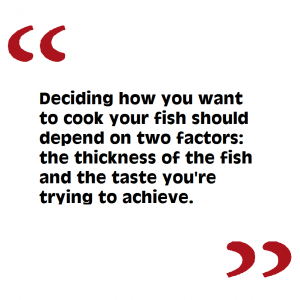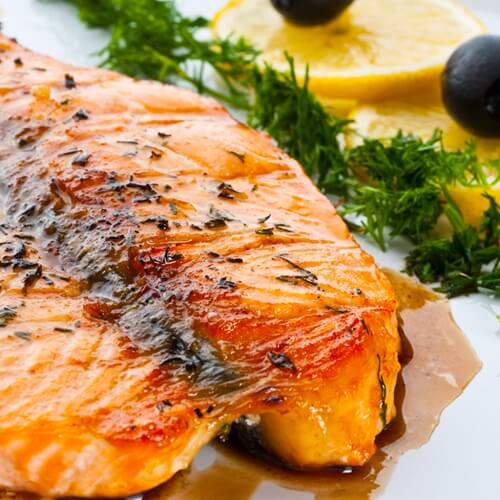Cooking fish: The basics
Many people, even culinary academy students, are intimidated by the idea of cooking fish, afraid that they won’t be able to hit that sweet spot between a slimy, undercooked fish and dry, overcooked fish. However, the process of cooking fish isn’t as difficult as many tend to believe. In fact, there are even multiple ways to do so, depending on your desired end result. Before you nix the idea of a fish fillet in favor of a chicken breast, read up on these tips:
Take the size of your fish into account
There are three basic sizes of fish cuts, all of which have ideal methods of cooking. According to food journalist Mark Bittman, they are:
- Thick fillets: Cod, halibut, salmon and sea bass are usually cut in thick fillets. These take between 8 and 10 minutes for each inch of thickness to cook thoroughly.
- Thin fillets: Flounder, sole, tilapia and trout are typically cut in thin fillets. Really thin cuts are usually
about one-fourth of an inch thick and can cook in about two minutes. - Steaks: Large fish like swordfish and tuna are typically sold in steak-form. Steak is a very thick cut of fish that’ll cook at a rate of
 about 10 minutes per inch of thickness.
about 10 minutes per inch of thickness.
Methods of cooking fish
Deciding how you want to cook your fish should depend on two factors: the thickness of the fish and the taste you’re trying to achieve. Here are some of the most popular
methods:
- Grill: The thicker the cut of fish, the better it will grill. Steaks are best on the grill as they’re the sturdiest cut and allow for the fish to be flipped over without falling apart.
- Deep fry: Thick fillets of fish are prime to deep fry. If the fish is too thin, the fryer will probably overcook the meat, but if the fish is too thick, the center of the meat may not cook properly. Fillets between a half inch and an inch are best in the fryer.
- Baking: Fish of any thickness can be baked in the oven. This method is most effective if you’re seasoning the fish.
- Saute: Thin cuts of fish are best sauteed, as they’ll become crispy in the pan while cooking all the way through. This is also the ideal way to cook other seafood, such as shrimp and scallops.
- Pan broil: Thick cuts of fish and salmon are perfect to broil, to ensure the fish doesn’t dry out due to the high heat.
How will I know when it’s done?
If you’re cooking fish that’s white in color, it’s finished cooking when the meat becomes opaque. If you’re cooking a pink fish, the fish is finished when it’s taken on a paler color, instead of the vibrant pink that it was before you cooked it. If you’re unsure, use a meat thermometer to determine if the inside temperature has reached 140 degrees Fahrenheit.



